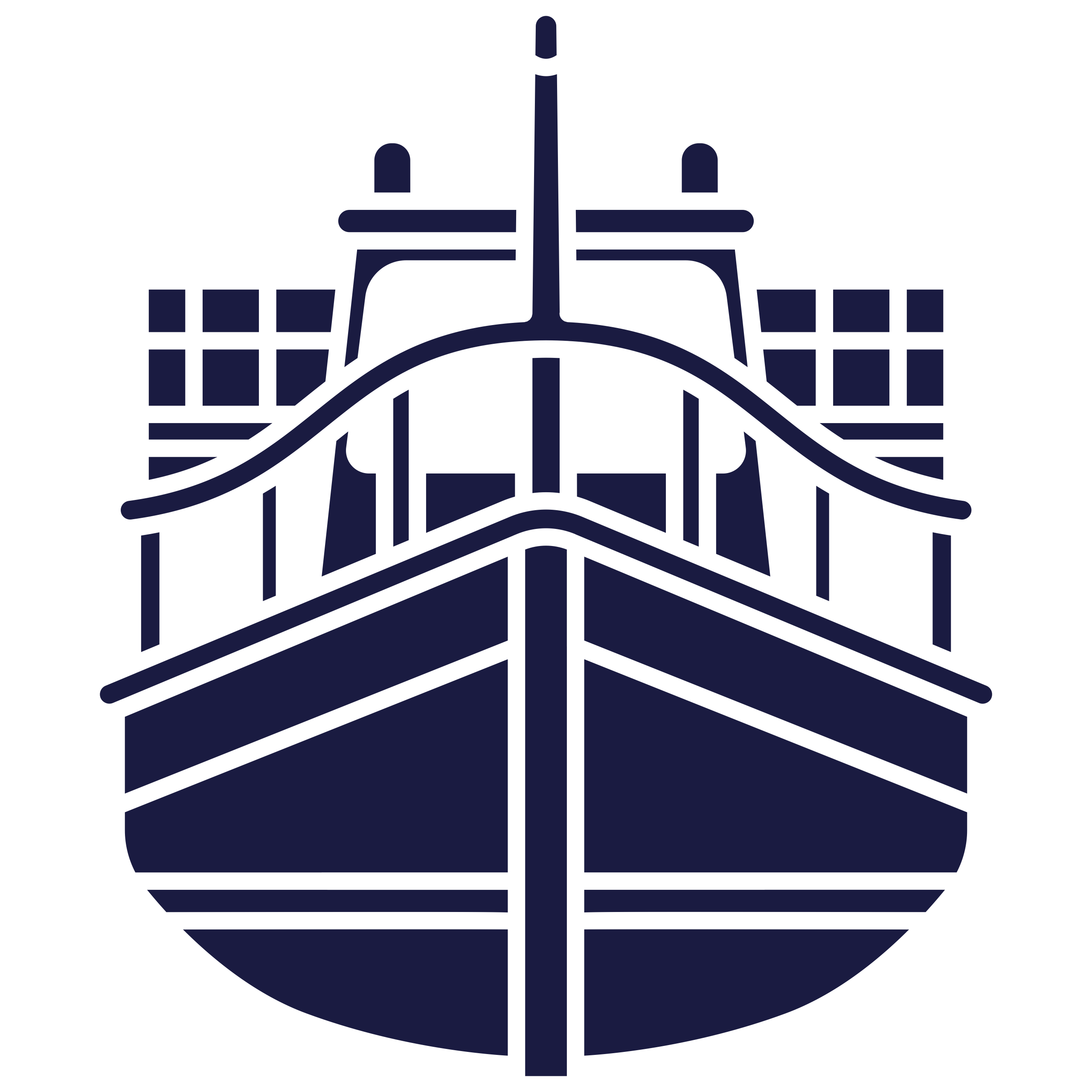Maritime Digitalization
Satellite Technology is Revolutionising the Maritime Industry
You can download the FREE e-book “Seafarers in the Digital Age” to read about the challenges and solutions that come with technological advancements in the maritime industry.
Consult with a Marine Satellite Communications Expert
Sections
Why Satellite Technology?
Digitalization has transformed the maritime industry, providing reliable and efficient communication, navigation, and safety systems. With the help of satellite technology, vessels can now communicate with onshore facilities, share data, and access real-time information about weather conditions, sea routes, and port schedules.
One of the key benefits of maritime digitalization is the ability to access accurate and up-to-date information about the location, speed, and heading of vessels. This information can be used to optimise vessel routes, reduce fuel consumption, and avoid hazardous weather conditions.
Stay Connected
Satellite communication systems have also made it easier for vessels to stay connected with onshore facilities, enabling faster and more efficient communication between ships and ports. This is particularly important for vessels transporting perishable goods or hazardous materials, where delays can be costly and dangerous.
Furthermore, satellite digitalization has made it possible to monitor vessel performance and track maintenance needs remotely, reducing downtime and increasing efficiency. Data on fuel consumption, engine performance, and other key metrics can be transmitted in real-time to shore-based facilities, allowing for predictive maintenance and optimised vessel operations.
Stay Safe
Digitalization has also enabled the development of new safety systems, such as automatic identification systems (AIS), which allow vessels to track other vessels and avoid collisions.
Learn More about Maritime Safety
How Does the Shipping Industry Use Satellite Technology?
Satellite technology plays a critical role in the shipping industry, helping to improve safety, efficiency, and environmental sustainability. The shipping industry uses satellite technology in a variety of ways, including:
Communication
 Satellites allow ships to communicate with each other and with shore-based facilities using satellite phones, email, and other communication systems. This is particularly important for ships operating in remote areas where traditional communication methods may not be available.
Satellites allow ships to communicate with each other and with shore-based facilities using satellite phones, email, and other communication systems. This is particularly important for ships operating in remote areas where traditional communication methods may not be available.
Navigation
 Satellites are used to provide accurate positioning and navigation information to ships, allowing them to navigate safely and efficiently. This is especially important in areas where traditional navigation methods such as visual aids and radio communication are limited.
Satellites are used to provide accurate positioning and navigation information to ships, allowing them to navigate safely and efficiently. This is especially important in areas where traditional navigation methods such as visual aids and radio communication are limited.
Weather Forecasting
 Satellites are used to provide real-time weather information to ships, enabling them to avoid severe weather conditions and plan their routes accordingly.
Satellites are used to provide real-time weather information to ships, enabling them to avoid severe weather conditions and plan their routes accordingly.
Cargo Tracking
 Satellites can be used to track the location and status of cargo containers, providing real-time information on their location, temperature, and other important parameters.
Satellites can be used to track the location and status of cargo containers, providing real-time information on their location, temperature, and other important parameters.
Search and rescue
 Satellites can be used to assist in search and rescue operations by providing real-time information on the location of distress signals and helping to coordinate rescue efforts.
Satellites can be used to assist in search and rescue operations by providing real-time information on the location of distress signals and helping to coordinate rescue efforts.
Environmental monitoring
 Satellites can be used to monitor ocean currents, water quality, and other environmental factors that may affect shipping operations.
Satellites can be used to monitor ocean currents, water quality, and other environmental factors that may affect shipping operations.
↓ Download the FREE e-book "Seafarers in the Digital Age"
Download the Free Study NowLearn how can maritime digitalization can support crew welfare, enhance safety, foster career development, and improve human performance.
Why Focus on Digitalization?
In recent years, there has been a significant shift towards digitalization in the maritime industry, driven by the need for improved efficiency, safety, and sustainability. Maritime digitalization involves the use of new technologies to streamline operations, reduce costs and improve decision-making. This trend is expected to continue in the coming years, with the market for maritime digitalization solutions forecast to grow significantly.
Emerging Technology
Artificial Intelligence (AI)
One of the key technologies driving digitalization in the maritime industry is artificial intelligence (AI). AI has the potential to transform many aspects of shipping operations, from vessel performance monitoring to predictive maintenance and crew management. For example, AI-powered predictive maintenance can help shipping companies to reduce downtime, extend the lifespan of their vessels and improve safety by identifying potential issues before they become critical.
Blockchain
Blockchain is also emerging as a technology with significant potential for maritime digitalization. Blockchain can be used to create secure, tamper-proof records of transactions, improving transparency and reducing the risk of fraud. It can also be used to streamline processes such as customs clearance and cargo tracking, improving efficiency and reducing costs.
Internet of Things (IoT)
Another technology that is driving maritime digitalization is the Internet of Things (IoT). IoT involves the use of sensors and other devices to collect and transmit data in real-time. In the maritime industry, IoT is being used to monitor vessel performance, track cargo and improve safety by providing real-time information about weather conditions and other potential hazards.
Learn More about Maritime Vessel Tracking
The Human Element in Digital Transformation
The shipping industry has been undergoing significant digital transformation in recent years, driven by advancements in technology and the need for improved efficiency and safety. However, this digital transformation has also had a significant impact on seafarers, who are at the forefront of these changes.
Challenges
1. The digital transformation of the shipping industry has the potential to improve safety and efficiency, but it also presents significant challenges for seafarers, including increased workload and reduced social interaction.
2. The use of automation and remote monitoring technologies can help to reduce the workload on seafarers, but it can also lead to a loss of skills and knowledge that are critical for safe and efficient ship operations.
3. The development of digital skills and competencies is becoming increasingly important for seafarers, as the industry becomes more reliant on digital technologies.
4. The use of digital technologies can improve the mental health and wellbeing of seafarers by providing them with better access to communication and support services.
Solutions
1. Develop training programs that focus on the digital skills and competencies required by seafarers in the modern shipping industry.
2. Encourage the development of social interaction opportunities for seafarers, to help address the isolation and loneliness that can be caused by digital technologies.
3. Invest in technologies that support the mental health and wellbeing of seafarers, such as telemedicine and virtual support services.
4. Ensure that the use of automation and remote monitoring technologies is balanced with the retention of critical skills and knowledge among seafarers.
The digital transformation of the shipping industry presents significant opportunities for improved safety and efficiency, but it also presents significant challenges for seafarers. By developing training programs that focus on digital skills and competencies, encouraging social interaction opportunities, investing in mental health and wellbeing technologies, and ensuring a balance between automation and critical skills retention, the industry can address these challenges and ensure that the seafarer human element remains at the center of its digital transformation efforts.
↓ Download the FREE e-book "Seafarers in the Digital Age"
Download the Free Study NowLearn how can maritime digitalization can support crew welfare, enhance safety, foster career development, and improve human performance.
Ferry Digitalization
Digitalization provides the ferry industry with a priceless dual opportunity. Increased deployment of digital solutions can reduce ferry operator costs thanks to a suite of enhanced operational efficiencies. Digital solutions can also assist operators to grow much-needed revenue via an improved passenger experience and boosting ancillary revenues.
Learn More about Ferry Digitalization
Inmarsat Product Solutions
The digital transformation of the shipping industry has resulted in the development of a range of digital solutions aimed at improving safety, efficiency, and sustainability. Inmarsat, a leading provider of satellite communication services, offers a suite of digital solutions designed specifically for the maritime sector.
Fleet XPress

Inmarsat's digital solutions include Fleet Xpress, a high-speed broadband service that provides seamless connectivity and enables real-time data transfer between ships and shore-based facilities. Fleet Xpress also includes Fleet Secure, a cybersecurity solution that protects ships from cyber threats such as malware, viruses, and phishing attacks.
Fleet VMS

Vessel Monitoring Systems are required by NOAA for certain vessels. Designed to be compact for small and mid-sized fishing and leisure vessels, the Pulsar iFleetONE VMS terminal delivers the required yet affordable, tailored broadband data, voice, and VMS services.
Starlink Maritime Solutions
Starlink Maritime service with High Performance Flat antennas and Priority service can provide global maritime coverage for boats of all sizes with up to 220 Mbps download while at sea.
Pulsar and Starlink together give you a complete solution of managed services in standalone and hybrid satellite networks for critical communications needs. Work with Pulsar to:
- Seamlessly integrate Starlink Priority and Mobile Priority service with your existing communications
- Access exclusive Pulsar IO enterprise-grade networking and security services for your fleet
- Get Real-time local support in Europe, Asia and the America
See our Starlink Maritime Overview
Visit our Starlink Satellite Internet Center
Pulsar iO Network Management and Security Platform
Commercial vessels and SuperYachts demand a complete onboard maritime IT solution, not just a terminal and open data pipe. This lets you manage users, configure settings, and remotely and securely access the vessel from shore. Modern Fleet IT managers know that the heart of any onboard network is not the satellite network, but the network management system. That's why Pulsar created the Pulsar iO platform, a suite of hardware and software solutions designed to enable rapid deployment, management, and optimization of satellite voice, data, and IoT applications. The Pulsar iO network management and security system includes:
- iO Pro - Network routers and security hubs
- iO Connect - Cloud-based online remote device management portal
- iO Connect App - Connect management app for iOS or Android
- iO Link - Connect to any device on your network through mapped ports remotely
Next Steps
1. Speak with a Marine Satellite Expert
2. Download the Complete Study: Seafarers in the Digital Age ↓
